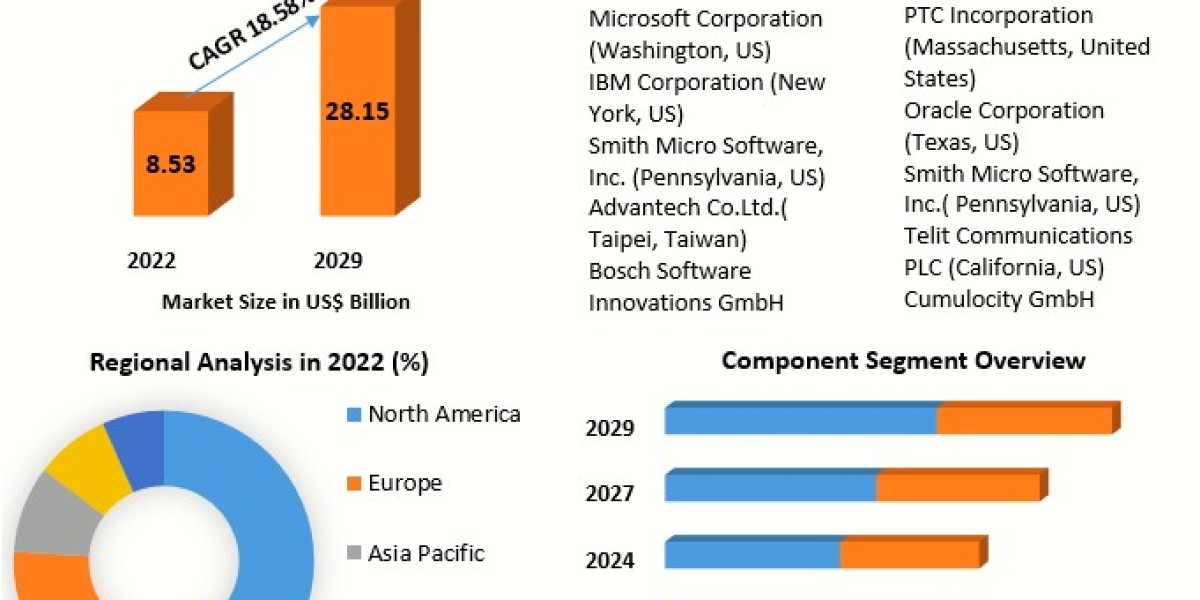In the fast-paced world of software development, turning an idea into a successful product is a complex journey filled with potential pitfalls. One of the most significant challenges is ensuring that your software idea is viable and worth pursuing. This is where a Proof of Concept (POC) becomes invaluable. A POC allows you to validate your software idea before investing substantial time and resources. Moreover, it serves as a powerful tool to secure stakeholder buy-in by demonstrating the feasibility and potential value of the proposed solution. In this article, we'll explore how to effectively use a POC to validate your software idea and gain the support of key stakeholders.
What is a Proof of Concept (POC)?
A Proof of Concept (POC) is a preliminary version of your software idea that demonstrates its feasibility. Unlike a Minimum Viable Product (MVP) or a prototype, a POC focuses on proving that the core concept behind your software idea is technically possible and can solve the identified problem. It is not meant to be a fully functional product but rather a simplified version that showcases the key features and capabilities.
Key Characteristics of a POC:
- Feasibility Focused: The primary objective of a POC is to prove that the idea can work in practice.
- Limited Scope: A POC typically focuses on a few key features or functionalities that are critical to the success of the software.
- Short Timeline: Developing a POC should be a relatively quick process, often taking a few weeks to a couple of months.
- Minimal Resources: A POC requires minimal resources compared to a full-scale product development effort.
Why is a POC Important?
A POC serves several critical purposes in the software development process, making it an essential step for both startups and established organizations.
1. Risk Mitigation
One of the primary reasons for developing a POC is to mitigate risk. Before committing significant resources to a software project, it's essential to ensure that the idea is technically feasible and that it addresses a real problem. A POC allows you to identify potential technical challenges and assess whether the proposed solution can overcome them.
2. Stakeholder Buy-In
Securing buy-in from stakeholders, such as investors, executives, or clients, is crucial for the success of any software project. A POC provides tangible evidence that your idea is viable, making it easier to convince stakeholders of its potential value. It demonstrates that you have thought through the concept and are capable of delivering a working solution.
3. Early Feedback
A POC allows you to gather feedback from stakeholders, potential users, and technical experts early in the development process. This feedback can be invaluable in refining the idea, identifying potential issues, and making necessary adjustments before moving forward with full-scale development.
4. Resource Allocation
By validating your software idea with a POC, you can make more informed decisions about resource allocation. If the POC proves successful, you can proceed with confidence, knowing that your time, money, and effort are being invested in a viable project. If the POC reveals significant challenges, you can reconsider your approach or pivot to a different idea.
5. Competitive Advantage
In a competitive market, being the first to validate and launch a new software solution can provide a significant advantage. A POC allows you to move quickly from concept to validation, potentially beating competitors to market.
Steps to Create a Successful POC
Developing a POC involves several key steps, each of which plays a critical role in the overall success of the project. Here’s a step-by-step guide to creating a POC that validates your software idea and secures stakeholder buy-in.
1. Define the Problem
The first step in creating a POC is to clearly define the problem that your software aims to solve. This involves identifying the pain points or challenges faced by your target audience and articulating how your software will address these issues.
Key Considerations:
- Target Audience: Who will benefit from your software? Understanding your audience is crucial for defining the problem accurately.
- Pain Points: What specific challenges or inefficiencies does your target audience face? The problem should be significant enough to warrant a solution.
- Current Solutions: What existing solutions are available, and why are they inadequate? This helps to position your software as a better alternative.
2. Outline the Concept
Once the problem is defined, the next step is to outline the concept of your software. This involves describing the core features and functionalities that will address the identified problem.
Key Considerations:
- Core Features: Focus on the essential features that are critical to solving the problem. Avoid getting bogged down in unnecessary details at this stage.
- User Experience: Consider how users will interact with the software. A positive user experience is crucial for the success of the final product.
- Technical Requirements: Identify the technical requirements needed to build the POC. This includes the technology stack, tools, and any third-party integrations.
3. Set Clear Objectives
Before starting development, it's essential to set clear objectives for the POC. These objectives should align with the goals of validating the software idea and securing stakeholder buy-in.
Key Considerations:
- Feasibility Validation: The primary objective of the POC should be to prove that the software idea is technically feasible.
- Stakeholder Expectations: Consider what stakeholders need to see in the POC to feel confident about the project's potential. This could include specific features, performance benchmarks, or user feedback.
- Success Criteria: Define what success looks like for the POC. This could be as simple as demonstrating that a particular feature works as intended or that the software can integrate with existing systems.
4. Develop the POC
With the objectives set, it's time to develop the POC. This involves building a simplified version of the software that focuses on the core features and functionalities needed to validate the concept.
Key Considerations:
- Agile Approach: An agile development approach is well-suited for POC projects, allowing for rapid iteration and continuous feedback.
- Cross-Functional Team: Assemble a cross-functional team that includes developers, designers, and subject matter experts. Collaboration is key to ensuring that the POC is both technically sound and aligned with the problem definition.
- Rapid Prototyping: Use rapid prototyping techniques to quickly build and test the POC. This allows you to identify and address issues early in the process.
5. Test and Validate
Once the POC is developed, it's time to test and validate it. This involves evaluating the POC against the success criteria defined earlier and gathering feedback from stakeholders and potential users.
Key Considerations:
- User Testing: Conduct user testing sessions to gather feedback on the POC. This helps to identify any usability issues and assess whether the software effectively addresses the problem.
- Technical Validation: Ensure that the POC meets the technical requirements and performs as expected. This may involve stress testing, performance benchmarking, and integration testing.
- Stakeholder Review: Present the POC to stakeholders and gather their feedback. This is a critical step in securing buy-in, as it provides an opportunity to address any concerns or objections.
6. Refine and Iterate
Based on the feedback gathered during testing and validation, refine the POC as needed. This may involve making adjustments to the features, improving performance, or addressing usability issues.
Key Considerations:
- Iterative Development: Use an iterative approach to continuously improve the POC based on feedback. This allows you to refine the concept and ensure that it meets the needs of both users and stakeholders.
- Continuous Communication: Keep stakeholders informed throughout the refinement process. Regular updates and open communication help to maintain their confidence and support.
7. Present the POC
Once the POC has been refined and validated, it's time to present it to stakeholders. This is your opportunity to showcase the feasibility of your software idea and demonstrate its potential value.
Key Considerations:
- Tailored Presentation: Tailor the presentation to the interests and priorities of your stakeholders. Focus on the aspects of the POC that are most relevant to their concerns.
- Demonstrate Value: Highlight the value that the software will bring to the organization or end-users. This could include cost savings, efficiency improvements, or competitive advantages.
- Address Concerns: Be prepared to address any concerns or objections that stakeholders may have. Use the POC to provide evidence that the software can overcome potential challenges.
Securing Stakeholder Buy-In
Securing stakeholder buy-in is often one of the most challenging aspects of bringing a software idea to life. Even with a validated POC, it's essential to approach this process strategically.
1. Understand Stakeholder Priorities
Different stakeholders may have different priorities and concerns. For example, investors may be primarily interested in the financial return, while technical stakeholders may focus on feasibility and scalability. Understanding these priorities allows you to tailor your pitch accordingly.
2. Build a Compelling Narrative
A compelling narrative can be a powerful tool in securing stakeholder buy-in. This involves telling the story of the problem, how your software will solve it, and the impact it will have. Use the POC to illustrate this narrative and provide tangible evidence of the software's potential.
3. Highlight the ROI
Return on Investment (ROI) is a critical consideration for many stakeholders. Use the POC to demonstrate the potential ROI of your software, whether through cost savings, increased revenue, or other benefits. Providing a clear and compelling ROI case can significantly increase your chances of securing buy-in.
4. Leverage Data and Metrics
Data-driven decision-making is increasingly important in today's business environment. Use the POC to provide data and metrics that support your case. This could include user feedback, performance benchmarks, or market research that demonstrates the demand for your software.
5. Engage Stakeholders Early and Often
Engaging stakeholders early in the process and keeping them involved throughout the development of the POC can help build trust and buy-in. Regular updates, transparent communication, and a collaborative approach can all contribute to a positive stakeholder relationship.
6. Be Prepared to Pivot
Finally, be prepared to pivot if necessary. If the POC reveals significant challenges or if stakeholders are not convinced of the software's potential, it may be necessary to adjust your approach. This could involve refining the concept, addressing specific concerns, or even exploring alternative ideas.
Conclusion
A Proof of Concept (POC) is a powerful tool for validating your software idea and securing stakeholder buy-in. By following a structured approach to developing and presenting a poc software development, you can mitigate risk, gather valuable feedback, and demonstrate the feasibility and potential value of your idea. Whether you're a startup looking to bring a new product to market or an established organization exploring innovative solutions, a well-executed POC can be the key to turning your software idea into a successful reality.
In summary, the steps to creating a successful POC include defining the problem, outlining the concept, setting clear objectives, developing the POC, testing and validating it, refining and iterating based on feedback, and finally, presenting it to stakeholders. By focusing on these steps and strategically securing stakeholder buy-in, you can increase your chances of success and bring your software idea to life with confidence.









